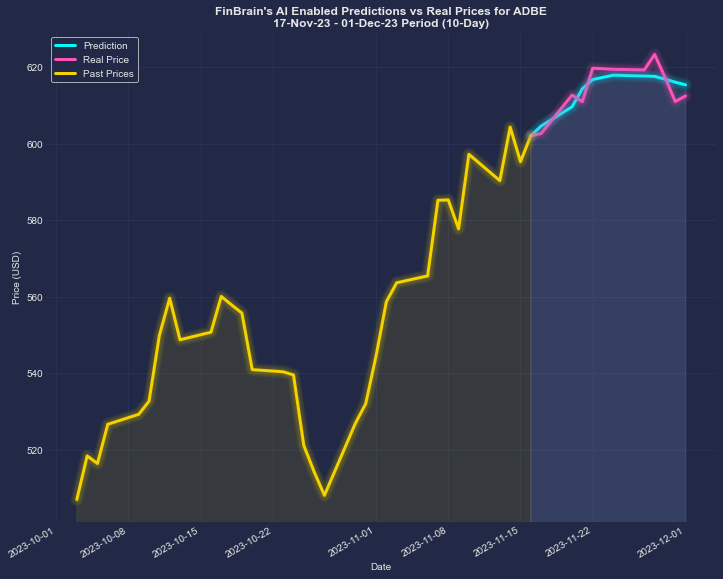20 Recommended Suggestions For Deciding On Ai Trading Stocks
20 Recommended Suggestions For Deciding On Ai Trading Stocks
Blog Article
Top 10 Ways To Comprehend Market Volatility In The Ai Market From Penny Stocks To copyright
Understanding market volatility for AI stock trading is crucial, whether you are dealing with penny stocks or copyright assets. Here are 10 key strategies to make sense of the market and utilize it to your advantage.
1. Find out what triggers volatility
Tips: Be aware of the primary factors that influence the volatility of your selected markets:
Penny stocks: news from companies, earnings reports and low liquidity.
copyright: Updates on regulatory requirements, blockchain technology advancements, and macroeconomic developments.
Know the drivers to anticipate price swings.
2. Use AI to track volatility indicators
Tip: Use AI to monitor volatility metrics such as:
Implied Volatility (IV) which is the measure of future price swings can be a helpful indicator.
Bollinger Bands highlights overbought and oversold conditions.
What's the reason? AI can interpret these indicators faster and more precise than manual methods.
3. Follow the historical volatility patterns
Tip: Use AI to identify volatility patterns and price movements in the past.
copyright assets tend to be more volatile during major events such as halvings or forks.
Understanding past trends can help predict future trends.
4. Leverage Sentiment Analyses
Tip: Implement AI to assess sentiment from news social media, as well as forums.
Pay attention to the niche market and small cap discussion.
copyright: Study Reddit, Twitter, Telegram and other social networks.
Why: Sentiment shifting can trigger rapid volatility.
5. Automate Risk Management
Tips: You can utilize AI to set up automatically Stop-loss orders and trailing stop.
Why: Automation protects you from spikes of volatility.
6. Strategically trading volatile assets
Tip: Choose strategies that work with high-risk markets.
Penny Stocks, focus on strategies for trading momentum or breakout strategies
copyright: Consider trend-following or mean-reversion strategies.
Why: Matching the approach you take to volatility can improve your chances of success.
7. Diversify Your Portfolio
Distribute your investments across different segments, asset classes or market capitalizations.
The reason: Diversification lessens the impact of extreme volatility in one area.
8. Pay attention to the liquidity
Make use of AI tools to perform market depth analysis and also to examine bid-ask rates.
Reason: The limited liquidity of penny stocks as well as certain cryptos may increase the volatility and lead to slippage.
9. Stay updated on Macro Events
Tips. Give data on macroeconomic developments and the policies of central banks as well as geopolitical developments to AI models.
Why: Market events that are more widespread tend to have ripple effects on volatile assets.
10. Avoid Emotional Trading
Tip: Use AI to make decisions in high-volatility situations to reduce the impact of emotions.
The reason is that emotional reactions like panic-selling or excessive trading can result in poor financial choices.
Extra Bonus: Make Use of Volatility in Your Best Interest
Tips: Make the most of volatility spikes in order to spot potential arbitrage opportunities that are quick and scalping trades.
Why: Volatility presents lucrative opportunities if approached with discipline and the right tools.
By implementing these tips you'll be able better manage volatility in the markets, and AI can optimize the strategy you use to trade penny stocks and copyright. See the top go to the website for trading chart ai for site advice including ai copyright trading, ai in stock market, ai for investing, ai investing app, trading bots for stocks, ai penny stocks, copyright predictions, smart stocks ai, ai trader, ai stock trading app and more. 
Top 10 Tips To Understand Ai Algorithms To Help Stock Analysts Make Better Predictions And Make Better Investments In The Future.
Understanding AI algorithms is essential in evaluating the performance of stock analysts and aligning them to your investment goals. This article will provide you with 10 tips for how to understand AI algorithms used to predict stocks and investment.
1. Machine Learning Basics
Tip: Get familiar with the basic concepts of machine learning models (ML), such as unsupervised, supervised, or reinforcement learning. These models are used to forecast stocks.
Why: These foundational techniques are employed by a majority of AI stockpickers to analyze historical information and formulate predictions. Knowing these concepts is essential in understanding the way AI process data.
2. Be familiar with the common algorithms employed in Stock Selection
Research the most well-known machine learning algorithms that are used in stock selection.
Linear Regression: Predicting the direction of price movements by analyzing historical data.
Random Forest: using multiple decision trees to increase accuracy in predicting.
Support Vector Machines SVM The classification of shares into "buy", "sell", or "neutral" based upon their specific characteristics.
Neural Networks - Using deep learning to identify patterns complex in market data.
The reason: Understanding the algorithms used to make predictions can help you determine the types of predictions the AI makes.
3. Research into the design of features and engineering
TIP: Examine the AI platform's selection and processing of features to make predictions. These include indicators of technical nature (e.g. RSI), sentiment about markets (e.g. MACD), or financial ratios.
What is the reason How? AI is impacted by the importance and quality of features. Features engineering determines the ability of an algorithm to identify patterns that can lead to profitable predictions.
4. Seek out Sentiment analysis capabilities
TIP: Ensure that the AI uses natural processing of language and sentiment analysis for unstructured data such as news articles, Twitter posts or social media posts.
The reason is that sentiment analytics can help AI stockpickers assess market mood, especially in highly volatile markets such as penny stocks, and cryptocurrencies where shifts in sentiment can drastically affect prices.
5. Understand the Role of Backtesting
Tips: Ensure that the AI model is tested extensively using historical data in order to improve predictions.
The reason: Backtesting lets users to determine how AI would have performed under previous market conditions. It gives insight into the algorithm's strength, reliability and ability to adapt to different market conditions.
6. Risk Management Algorithms: Evaluation
Tip: Know the AI's risk management tools like stop loss orders, position size and drawdown restrictions.
Why: Effective risk management can help avoid significant losses. This is especially important on markets with high volatility, such as the penny stock market and copyright. Strategies for trading that are well-balanced require the use of algorithms to limit risk.
7. Investigate Model Interpretability
Tips: Look for AI systems that provide transparency on how they come up with predictions (e.g. important features, decision tree).
What is the reason: Interpretable AI models assist you in understanding the process of selecting a stock and what factors affected this choice. They also improve your confidence in the AI's suggestions.
8. Examine the Use of Reinforcement Learning
Tips - Get familiar with the notion of reinforcement learning (RL) that is a subset of machine learning. The algorithm adjusts its strategies to rewards and penalties, learning by trials and errors.
The reason: RL has been utilized to develop markets which are constantly evolving and fluid, like copyright. It can optimize and adjust trading strategies according to feedback, increasing long-term profits.
9. Consider Ensemble Learning Approaches
Tip
What's the reason? By combining the strengths and weaknesses of various algorithms to minimize the chance of error Ensemble models can increase the accuracy of predictions.
10. It is important to be aware of the distinction between real-time data and historical data. the use of historical data
Tip. Check if your AI model relies on more actual-time data or historical data in order to come up with its predictions. A lot of AI stock pickers employ the two.
Why is this? Real-time data especially on volatile markets such as copyright, is vital for active trading strategies. However, historical data is beneficial for predicting trends that will last over time. It is best to utilize a combination of both.
Bonus: Be aware of Algorithmic Bias & Overfitting
Tips: Be aware of potential biases that can be present in AI models and overfitting - when models are too tightly calibrated to historical data and fails to generalize to changing market conditions.
The reason is that bias and over fitting can lead to AI to make incorrect predictions. This results in poor performance, especially when AI is employed to analyze live market data. For long-term success it is essential to make sure that the model is standardized and generalized.
If you are able to understand the AI algorithms employed in stock pickers will allow you to assess their strengths, weaknesses and suitability for your trading style, whether you're focusing on copyright, penny stocks or any other asset class. This will help you make informed choices about which AI platform best suits your strategy for investing. Have a look at the top rated stock ai for blog info including best stock analysis website, ai stock, best ai penny stocks, ai stock predictions, ai investing, ai trading platform, ai investing app, ai trading platform, best stock analysis app, ai for trading stocks and more.